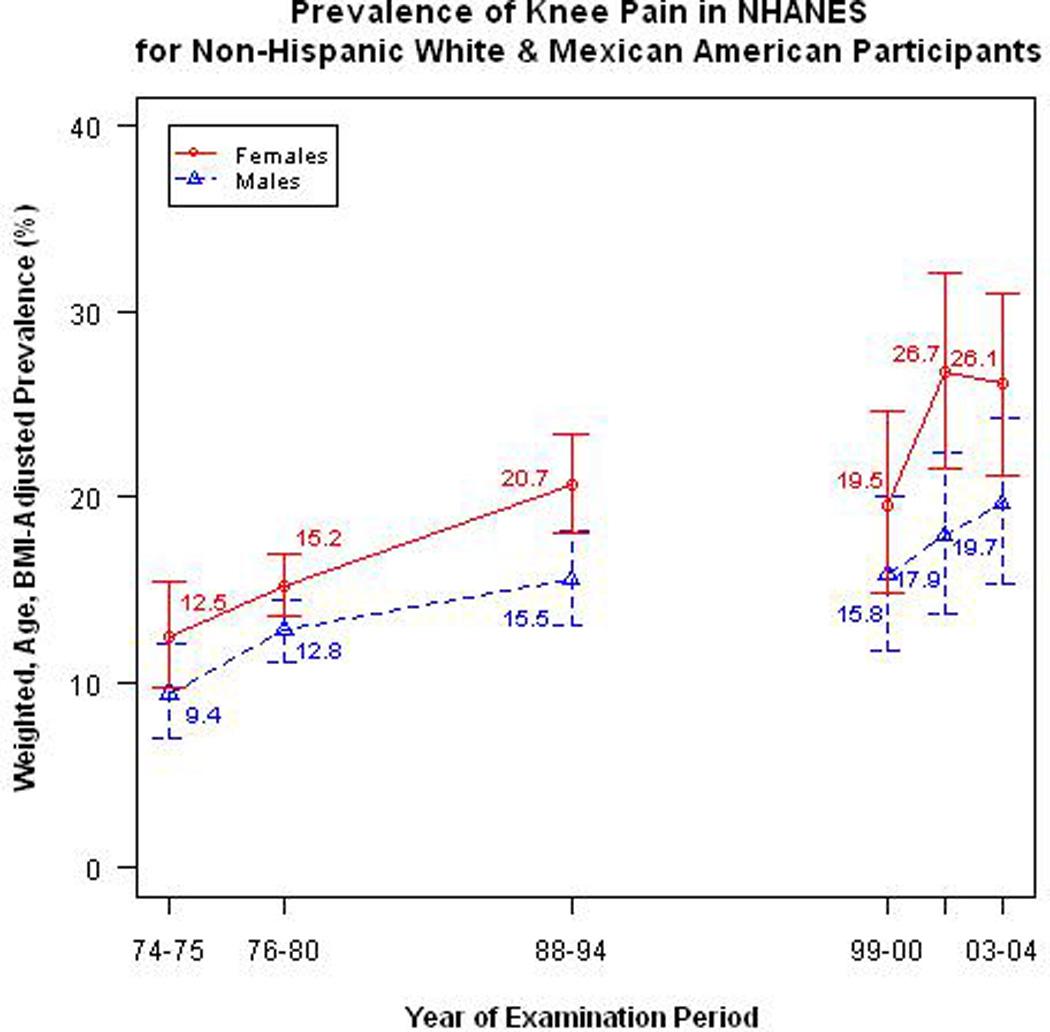Figure 1.

Sampling weighted and age and BMI-adjusted prevalence, along with 95% Confidence Intervals, of Knee Pain for Non-Hispanic White & Mexican American Participants across 6 NHANES surveys between 1971 and 2004. Solid line is for female and broken line for males. Test for trend from 1974 to 1994 in men (p = 0.003) and women (p = 0.002). Test for trend from 1999 to 2004 in men (p = 0.090) and women (p = 0.012).
The corresponding age and BMI-adjusted prevalence of knee pain in African American men from 1974 to 1994, was 12.6%, 10.7%, and 15.6%; p-trend=0.35. The corresponding prevalence in women over the first three NHANES was 16.7%, 22.0%, and 28.7%; p-trend=0.037. For the subsequent three continuous NHANES, prevalence of knee pain for men was 7.9%, 16.6%, and 18.6%; p-trend=0.22. The corresponding prevalence of knee pain in women over the later three NHANES was 13.8%, 22.2%, and 29.9%; p-trend=0.003.
